New Old-Fashioned Ways
Most expatriates adopt some Swiss holiday traditions for their own families. Here four women – from the U.S., England, and South Africa – tell us something about their own Swiss holidays.
When I was a girl in Colorado, we always had an economical and practical artificial Christmas tree, adorned with electric blinking lights and silvery tinsels. The first year my Swiss husband and I celebrated Christmas in Switzerland, he insisted that we buy a real tree, as this is what he grew up with. I agreed to this novel idea but was panicked to find out that he also wanted to put real candles on this flammable object. I could not relax and insisted that we stand with a bucket of water in full view of the tree in case it ignited!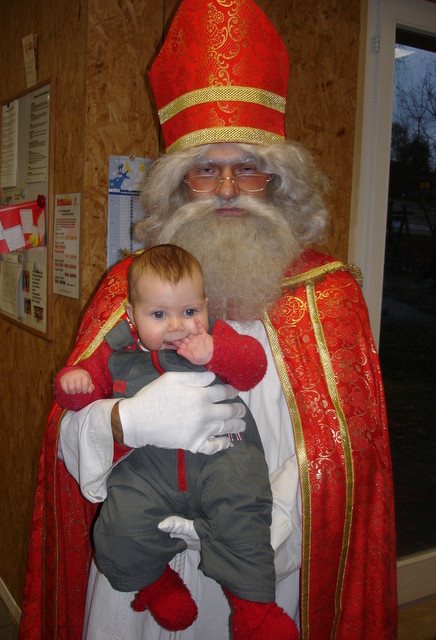
I’ve been living in Switzerland for over 12 years now and each year we still get a real Christmas tree. I’ve relaxed a bit and can enjoy the anticipation and excitement of the tree’s shape and size the wonderful scent of pine needles. But since the danger of fire is at its highest when the tree is dry, my husband insists that we get the tree three to four days before Christmas. This is, for me, unheard of. How can we get into the Christmas spirit when the tree is put up and decorated so close to Christmas? This is a topic of discussion every year and the compromise is usually 7 to14 days before Christmas. This year I am aiming for the maximum 14 days and convincing my husband that electric blinking lights would also add to the beauty of the tree. Of course I will agree to the candle lighting on Christmas Eve.
The Swiss tradition of Samichlaus is one that I reluctantly agreed to because the tradition seemed a bit cruel to me. Samichlaus (the good guy) calls the children up one by one and accurately tells them all the good and bad they had done throughout the year. The children are unaware that the information has been passed on to him by their parents and are horror-stricken or proud as the deeds are announced in front of everyone. If they have been particularly mischievous throughout the year, Schmuztli (the bad guy) threatens to carry them away in the bag that he has brought along. Coming from America, where Santa Claus is a big, fat, jolly man with a twinkle in his eyes, I found this to be unkind. Having said that, as a mother of three, I discovered that Samichlaus can help parents to convince or remind children of behaviours that need to modified or altered.
I tell our children that Samichlaus is one of Santa’s helpers and he comes on the sixth of December to remind them of things that they need to work on before the actual Santa arrives and that they have 19 days to do some behaviour modification. This works well in our family, so that we can keep the two traditions separate yet combine them to work together. – Naree Rüegg
Kerzenziehen
Upon my move to Switzerland, five years ago, I knew that many new customs and traditions would await me. It seems that many of the “new” customs I encountered are enjoyed during the fall and winter months of the year. I now look forward to raclette, fondue chinoise and cheese fondue. I gather greens to construct an advent wreath, make time to see the Samichlaus parade, and joyfully celebrate the season of Fasnacht. All of these traditions were familiar to me from an earlier stay in Switzerland. 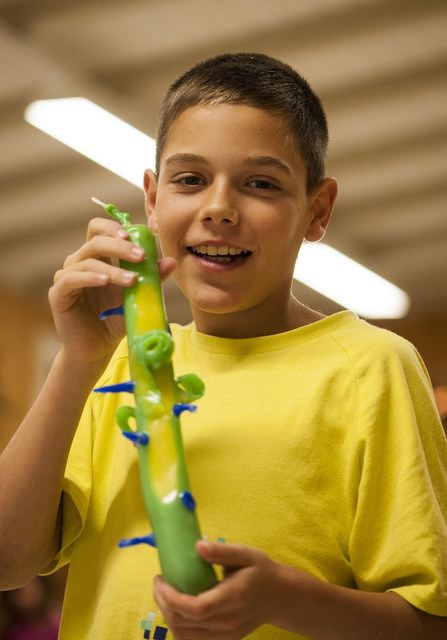
Candlemaking was an entirely new experience. A friend mentioned that her town hosts a Kerzenziehen event each year. It sounded interesting so I decided to give it a try. Upon my arrival I was given a long piece of string with a loop for my finger and a rag. Directed to large vats of hot colored wax, I was instructed to dip the string first in the wax, then in cold water, then wipe with the rag. Repeat, repeat, repeat. Sound boring? In fact it was a lot of fun, choosing which colors of wax to create rainbow or holiday effects. My daughter, who was 5 years old at the time, enjoyed herself immensely and created a beautiful candle. One of the most interesting things I found, though, was the interaction of the people involved. Everyone had a few words to say to another. It is one of the few occasions that I see the generations coming together. The teenagers, all gangly limbs and baggy pants standing side by side with the trim grandmothers and sturdy rosy-cheeked children, smiling and taking part in a wonderful Swiss tradition that I am pleased to have experienced and happy to adopt. This year my four-year-old son will join his sister and me, standing at the vats of hot colored wax, holding a piece of string and creating not just a beautiful candle, but, also a long lasting memory. – C.A.
Christmas in a Cold Climate
Christmas is the time when spring and winter come together in my heart and my emotions match the stormy weather patterns of Haiti and Florida! After almost ten years in Switzerland, it still seems strange to hear “I’m dreaming of a white Christmas” on the radio and to sense the excitement around me when this dream comes true on Christmas morning. Shouldn’t it be a hot South African day? Roasted leg of lamb, fried potatoes and sweet pumpkin with cinnamon sugar!
Back to reality: I find myself again in Migros! One hand holds a huge piece of Raclette cheese and the other, fresh cut beef filet for the meat fondue. Peter’s family keeps to these traditional Christmas meals. My next stop is the scented candles shelf. Melted cheese odors can be hard to get rid of. I love Raclette now, after accepting the fact that something that smells so bad can taste so good!
Yes, I’ve surrendered to Swiss Christmas culture… and I like it more and more. You become inventive in finding 24 little gifts for each child’s Advent calendar; I have learnt to wear old pants and shoes to Kerzenziehen and appreciate the fact that the next years’ supply of candles is taken care of. I also keep the tradition of making my own Adventskranz. The kids are allowed to light up one of the four candles for each of the four “Advent” Sundays – the countdown to Christmas. During December, I join a group of Swiss friends, to make Christmas tree decorations with the children.
Swiss mommies are incredible Christmas cookie bakers, although I find that the “ready made cookie dough” at Coop also impresses most taste buds. There is no replacement for homemade Grittibänz though. These lovely bread figures broke the heart of the Gingerbread Man. Our daughters love to bake and shape them. A visit to Samichlaus in the forest, on the 6th of December, is a must. His supernatural insight into the hearts of my daughters fills them with a deep respect. They eagerly await their Samichlaus surprises. Mandarins never taste as good as at Christmas and it amazes me that ordinary peanuts get a noble status as soon the lights on the Bahnhofstrasse are switched on. I’ve also learnt to make Glühwein, with a bottle of good South African wine and spices from the huge Christmas market at the Zurich main station.
All these very special Christmas traditions became an important part of my life here in Zurich. My homesick feelings seem to disappear as soon as we light up the candles and unpack our gifts. My parents do come to the rescue, bringing self-rising flour, real fruity Christmas cake soaked in brandy, and real mutton sausages…. Oh, wait – we are in Switzerland! Nothing like it anywhere else, oder? – A.G.
The Silvesterklausen
Our idea of family holiday fun is trudging through the snow at about seven in the morning, on the lookout for Swiss men wearing weird costumes, carrying cow bells and yodeling in beautiful harmonies. This takes place in Appenzellerland on both December 31st (New Year’s Eve) and January 13th (Old New Year’s Eve). The Chläuse, as they are called, go from farm to farm singing a blessing to the residents of the villages of Urnäsch, Herisau, Hundwil, Stein, Waldstatt, Schwellbrunn and Schönengrund. The most popular for tourists is Urnäsch. The origin and meaning of this ancient custom are the subject of speculation, because few written documents exist. Certainly pre-Christian, it has a delightfully pagan feel, and although the costumes are somewhat alarmingly demonic, the singing is the opposite. Deep harmonies and high overtone singing – where one person is producing two tones – is a real musical treat.
The Old New Year’s Eve, January 13th, is celebrated with particular fervour. The date can be traced back to a calendar conflict from the 16th century, when Pope Gregory II improved the Julian calendar by moving New Year’s Eve ahead thirteen days. The non-Catholics of Ausserrhoden were not willing to acknowledge the Pope’s ideas and refused to give up the old calendar. Even today, New Year’s Eve is stubbornly celebrated on its old date.
Although female figures are portrayed, this is a purely male custom. Today there are three types of Chläuse: the wüeschte (ugly) ones, the schöne (beautiful) ones and the Wald– or Naturkläuse (woodland and nature) ones. The ugly characters often wear fearsome, demonic masks and rough garments made of foliage, straw or brush-wood. These figures that scare away uncanny and evil sprits with noise and their scary dress, are presumably the original figures of this winter custom. The woodland and nature Chläuse also wear costumes and masks made of natural materials, but do not appear as wild or primitive. Masks, hats and coats are transformed with great care into decorative marvels of such natural materials as bark and pine seeds. This type of Chläuse was created by a group from Urnäsch less than two centuries ago.
The beautiful Chläuse have existed since the beginning of the 19th century. Today, they mostly appear in groups of six called a Schuppel: the leader with round bells (Rolli), four with cowbells (Schelli) and another Rolli bringing up the rear. A Rolli wears a type of woman’s costume with a large wheel-shaped bonnet on his head. On his torso, he wears a leather strap with thirteen round bells, called Rollen. Those with cowbells wear male costumes and wide-brimmed, richly decorated hats. On their chests and backs they wear bells attached to straps across both shoulders. The headdresses of both the Rolli and the Schelli are decorated with scenes depicting country life, placed in the niches of the bonnets and on the flat hats. Ringing their bells and yodelling, the Chläuse wish everyone happiness and prosperity for the New Year and receive Glühwein and money in return. –Juanita Miller
Reprinted from the Mothering Matters 2004 November/December issue
Illustration by Monica DeSalvo
Kerzenziehen photos used with permission from IG Freizeit Wilen.
Samichlaus photos by Andrea Snashall.

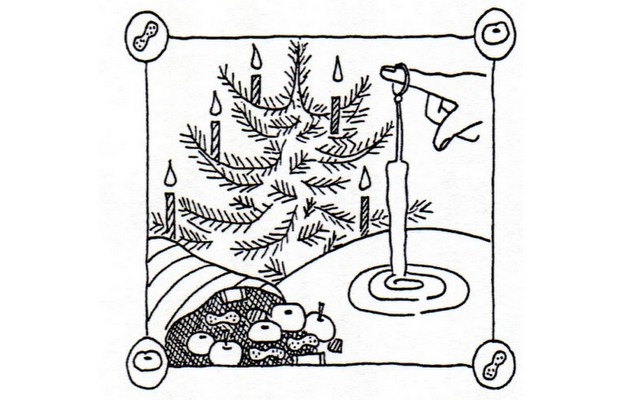
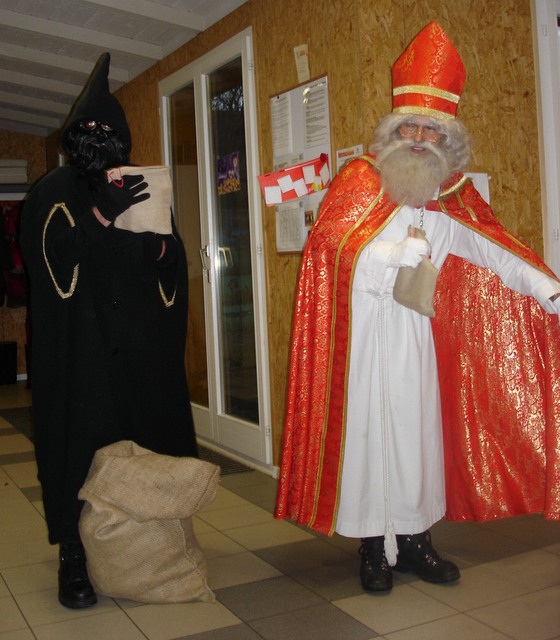
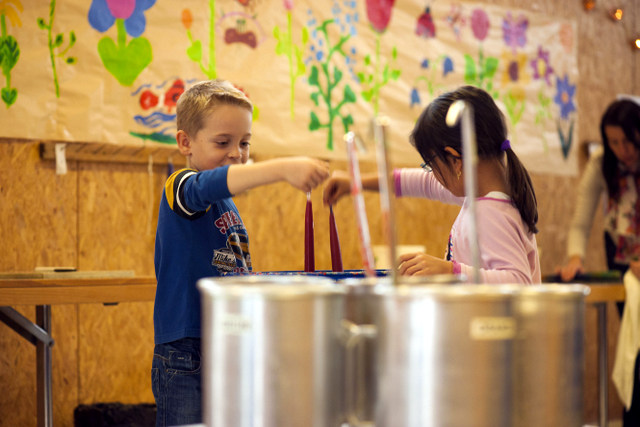
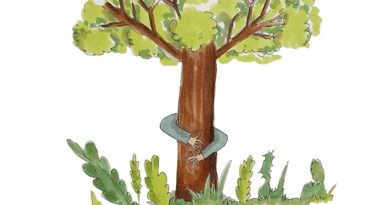
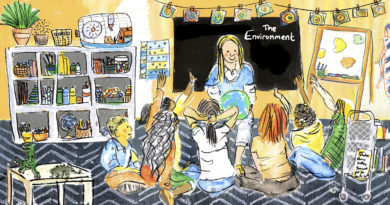
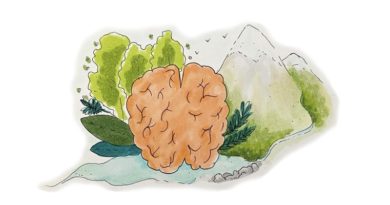
Isn’t an artificial tree real?
An artificial tree is “faux”; I believe that’s the technical term (according to my family).